

Web3 has transformed the way modern businesses are built with global teams, token-based funding, smart contracts, and real-time asset flows. But while the technology has advanced rapidly, day-to-day operations haven’t always kept pace.
Many organizations, even those with substantial capital, still rely on spreadsheets, manage wallets across multiple chains, and manually compile financial data from fragmented sources. This approach works in the early stages, but becomes increasingly unsustainable over time.
Through collaborations with DAOs, protocols, and crypto-native startups, Kryptos has observed a clear trend: The most resilient and scalable teams don’t just ship code, they operate with clarity, structure, and financial discipline.
Here are five critical areas where web3 businesses can level up and how Kryptos supports these efforts through purpose-built infrastructure.
1. Real-Time Understanding of Treasury Health
If you asked your team today, “How much do we have in the treasury?” Would you get a clear answer?
After surveying 100+ Web3 businesses and finance leaders, the answer is: not really.
Treasuries in Web3 are often distributed across wallets, exchanges, bridges, and staking contracts. Answering a basic question like “What is the current runway?” still requires teams to:
- Check DeBank or Zapper
- Take and store screenshots
- Manually copy figures into Excel or Notion
- Add context (“this is payroll,” “this is locked”)
- Build custom scripts for internal modelling
- Record videos or run manual walkthroughs for audits
These practices result in outdated, incomplete, or inconsistent information.
Kryptos provides a real-time, consolidated view of treasury assets across chains and platforms. Every transaction can be tagged by purpose, tracked in USD and token terms, and organized into views tailored for finance teams, founders, and investors.
AI Assistants built into the platform respond to common financial queries such as:
- “Which tokens are unlocking this month?”
- “How much was spent on grants in the last quarter?”
- “What’s the projected runway under a 20% ETH correction?”

Figure-1: Organisational-level financial dashboard
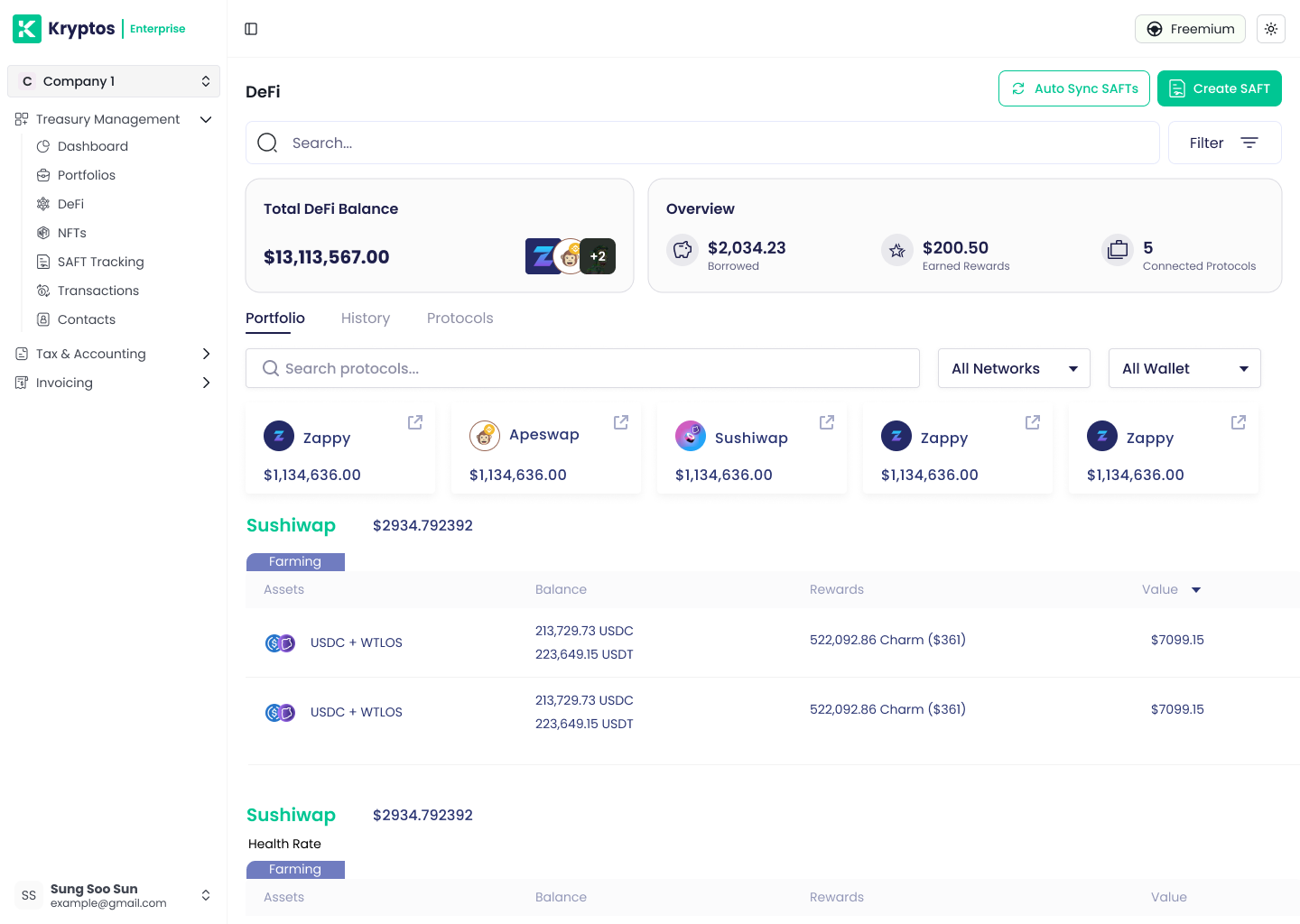
Figure-2: DeFi dashboard with support for over 5000+ DeFi protocols across EVMs and non-EVMs
2. Operational Discipline Through Financial Hygiene
Fast-growing teams frequently use the same wallet for payroll, protocol activity, and ecosystem initiatives, leading to confusion, reporting issues, and internal bottlenecks.
Common outcomes include:
- Payment delays
- Missed obligations
- Difficulty justifying transactions to auditors or stakeholders
With Kryptos, wallets can be categorized by function (payroll, reserves, operations), roles and permissions can be defined, and all financial activity is tagged and recorded.
This structure creates a foundation for scalability, auditability, and internal accountability.
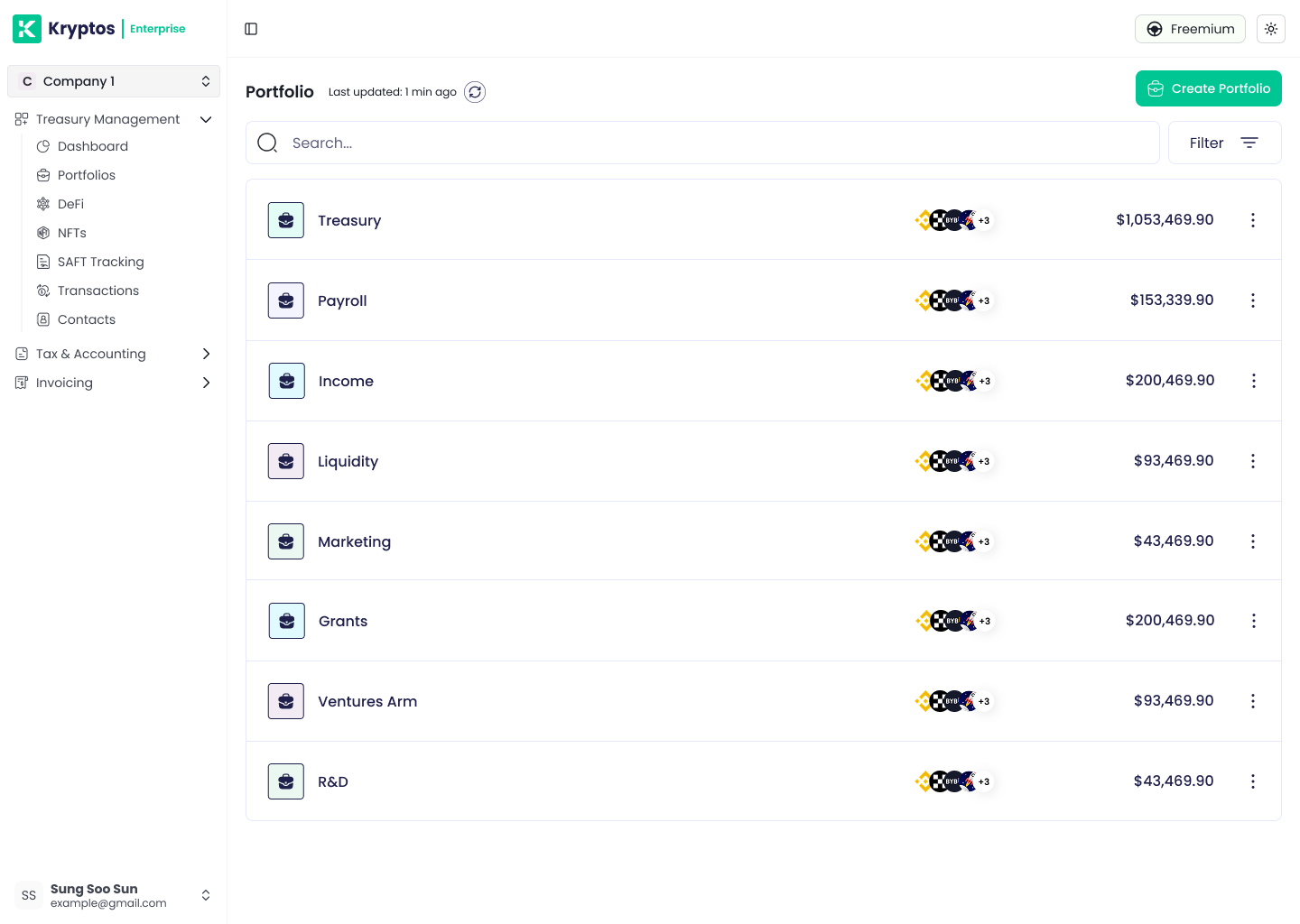
Figure-3: Portfolios Categorisation to help maintain Financial Hygiene and improve Operational Resiliency

Figure-4: Organising different wallets and exchange accounts into separate portfolio views
3. Compliance-Ready From the Start
Many teams treat compliance as a late-stage concern, but global expectations are rising. Regulations around tax treatment, contributor classification, and capital flow are evolving fast and retrofitting structure after growth is both costly and time-consuming.
The current sub-ledger solutions today just bridge the data gap between traditional ERP solutions and Web3 financial data, but don’t handle the scenarios of how different transactions are treated across different jurisdictions, leading to a lot of manual classification and complex rules setup.
Kryptos enables Web3 organizations to stay prepared from the outset:
- Transactions classification and tax calculation support across 35+ countries
- Cost basis, capital gains, and fair market value tracking
- SOC1 and SOC2-ready audit exports
- API integrations to support 1099-DA, DAC8, CARF, and more
These tools eliminate guesswork and allow teams to meet legal and reporting obligations with confidence.
4. Structured Token Flows, Vesting & Contributor Payments
While sending tokens on-chain is simple, managing the why, what, and when behind each transaction is where operational challenges appear.
Most organizations still rely on spreadsheets or Notion tables to track SAFT agreements, token vesting, contributor payments, and investor unlocks. Even prominent VCs have been known to use calendar reminders for critical unlock events.
Kryptos streamlines the entire lifecycle of token-based finance:
- Tracks SAFTs and unlock schedules
- Visualizes vesting timelines for teams and investors
- Matches on-chain activity to agreements and invoices
- Enables one-time and recurring crypto invoicing with reconciliation for service & infra businesses.
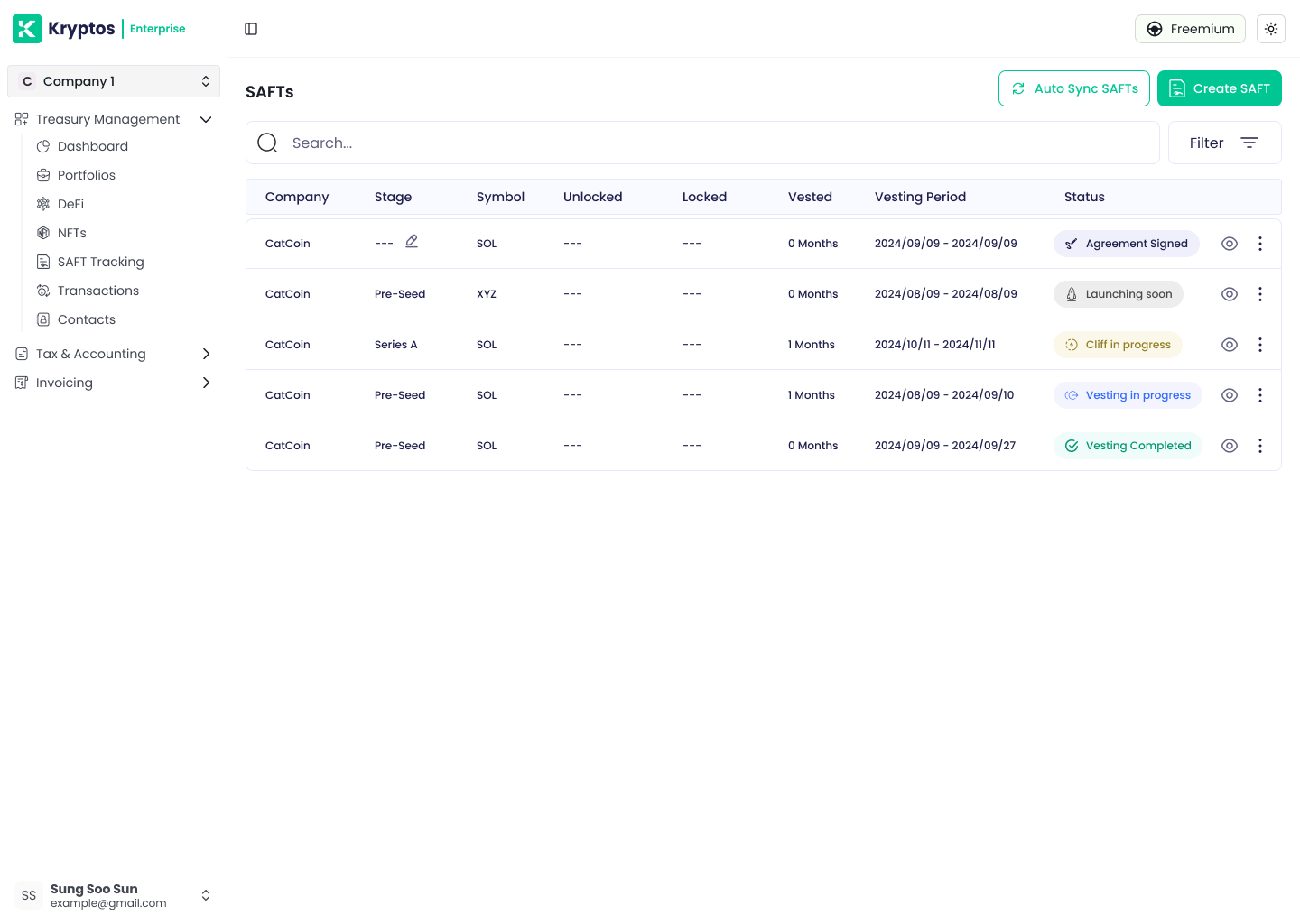
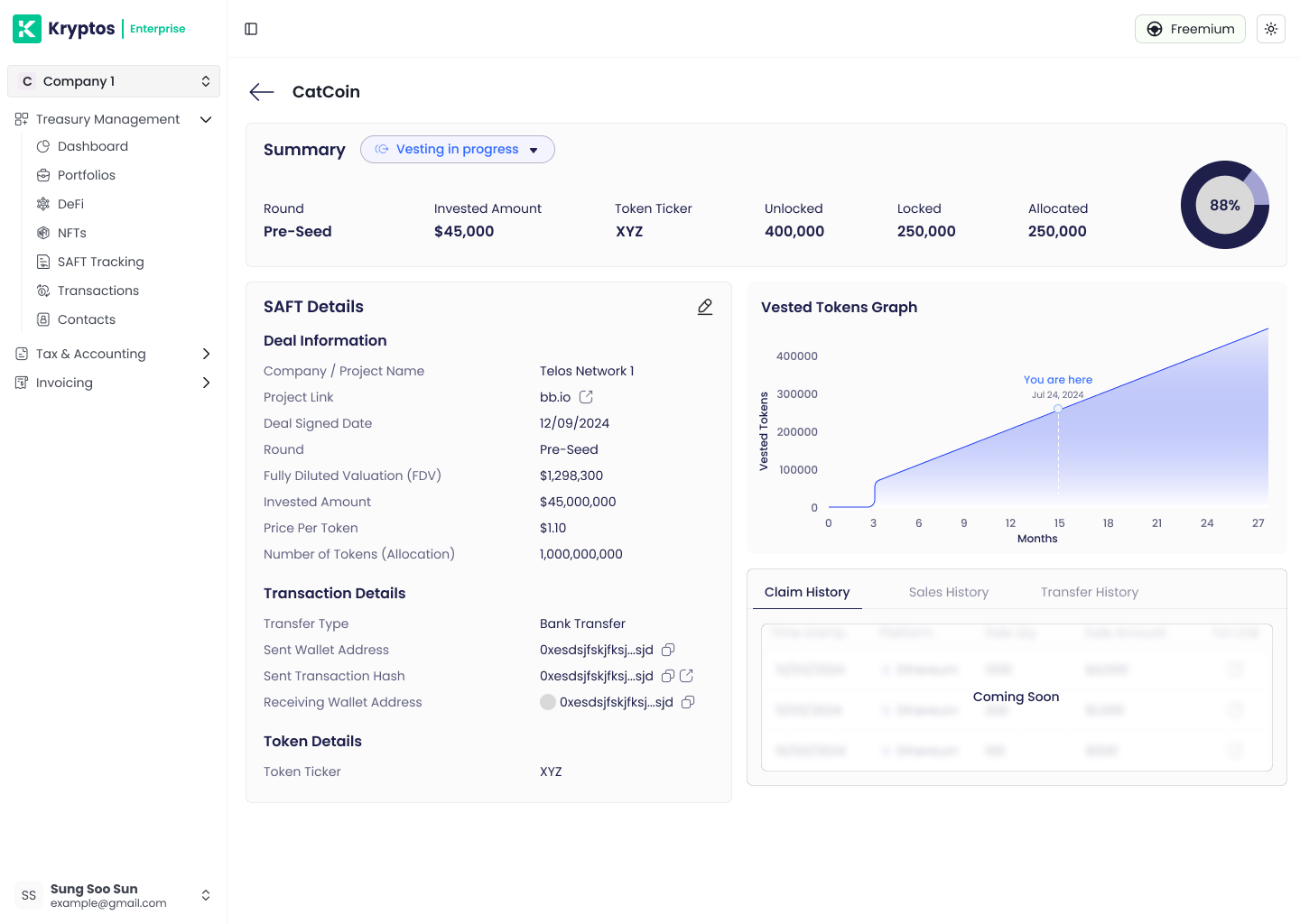
5. Avoid Vendor Lock-Ins - Use Infrastructure That Grows With You
Many teams outgrow their tools. Vendor lock-in, rigid dashboards, or closed data formats can limit growth, innovation, and internal tooling.
Kryptos is built as an open financial infrastructure layer:
- Data can be shared securely with investors, service providers, custodians, and auditors
- Custom dashboards and workflows can be created through Kryptos Connect APIs
- The Kryptos Hub enables seamless collaboration across the Web3 financial ecosystem
This ensures that teams remain flexible and in control without needing to rebuild their stack.
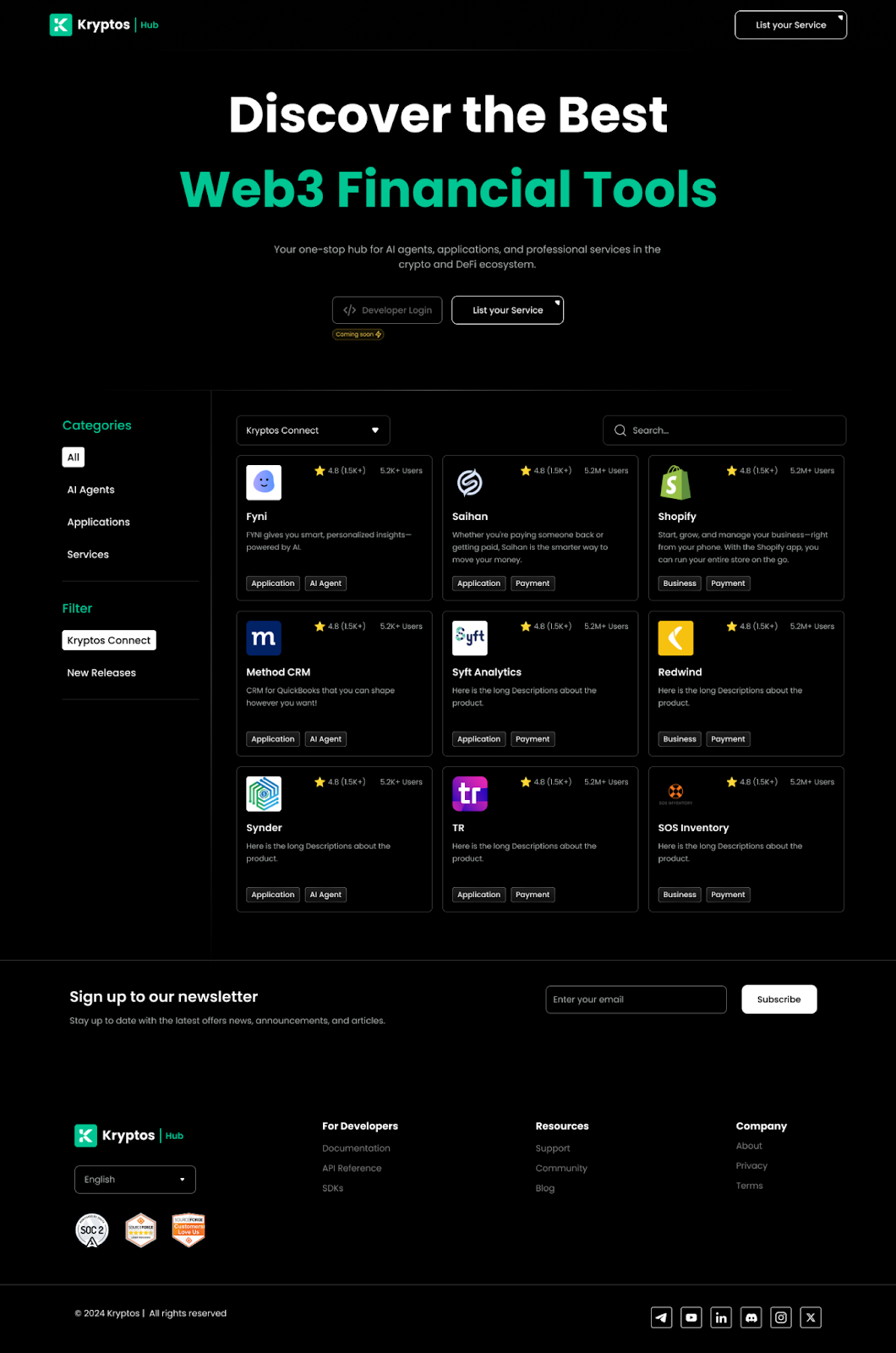
Why We Built Kryptos
Before becoming a product, Kryptos started as an internal need. The founding team was managing millions in digital assets and faced recurring challenges:
- “Where are the funds?”
- “What’s the actual burn rate?”
- “Who still needs to be paid?”
- “How are token unlocks being tracked?”
There wasn’t a single platform that brought all of these answers together, so we built one.
Today, Kryptos serves as the financial infrastructure layer for Web3 teams, from early-stage startups to enterprises.
Final Thoughts
As the Web3 ecosystem matures, expectations are rising across the board.
- Investors seek clean, real-time financials.
- Regulators require clear, jurisdiction-aware records.
- Contributors expect timely, transparent payments.
- And operational resilience is no longer optional.
Teams serious about long-term success need more than dashboards, they need infrastructure built for Web3.
If you would like to learn more about Treasury Management, Crypto Accounting and Compliance, you can check out Kryptos or contact: support@kryptos.io
Sukesh Tedla is the Founder & CEO of Kryptos and a serial entrepreneur in blockchain and fintech. He previously co-founded the Telos Blockchain Network and served as Chairman of the Swedish Blockchain Association, driving blockchain adoption and policy across Europe. With a background in Telecommunications (M.Sc.), Sukesh has dedicated his career to creating scalable ventures that simplify digital asset finance, compliance, and tax reporting for a global audience.

